JournalismPakistan.com | Published February 24, 2025 at 10:18 pm | Dr. Nauman Niaz (TI)
Join our WhatsApp channel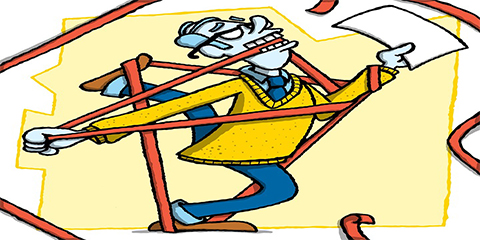
I never wanted to term bureaucracy as theatre, nonetheless with all my experience, it was best theatrical. Even the artists didn’t fill the roles, and most decisions were unmerited. Sad, though not true for all cases.
Suppose I have to be stingier still, bureaucracy, where inefficiency masquerades as tradition and mediocrity is lauded as competence. In that case, I have played my part, not as a willing actor but as an unwilling witness to the erosion of merit.
My endeavors, marked by diligence, innovation, and a steadfast commitment to excellence, were met not with recognition but with derision. Productivity, execution, profitability, and brand development, each a pillar upon which I built my professional integrity were dismissed with casual indifference.
Castigated and marginalized, I observed with dispassionate amusement as those who embraced incompetence found themselves celebrated, while those who threatened the status quo with ability were ruthlessly cast aside.
I sought legal recourse not to reclaim a lost position but to defend an unimpeachable principle: my integrity. There was no bitterness, no lamentation, only an unobtrusive certainty that I did not need them, they, in truth, needed me. And as their structures, once teetering on the edge of respectability, crumbled into irrelevance, their refusal to adhere to solutions only confirmed the immutable law of decay. I won my case at the Islamabad High Court. Hurrah!
Self Denial
Thus does the public sector function, its inertia an impregnable resistance against progress. Yet, I remained unperturbed. My purpose lay not in personal issues but in a cause far greater, a vocation that warrants my uncompromising attention.
The institution of cricket, once a source of honor and discipline, has been besieged by the very stakeholders who once adorned its consecrated realms.
These self-anointed savants, relics of a bygone era, have reduced cricket to a grotesque parody of its former self. They wore the baggy green with pride, Mohammedans Crescent & Mohammad Iqbal’s Shaheen, yet in their twilight years, they have squandered its essence. They were gifted, undoubtedly, skilled, formidable, and capable of dismantling the finest of oppositions. And yet, their fatal flaw was always apparent: self-obsession.
Their brilliance never coalesced into collective triumph. They played for Pakistan, but they never built Pakistan cricket. Post-retirement, they adhered to new masks, mentors, advisors, and head coaches, positions they neither earned nor deserved.
Devoid of formal education in coaching, untested by the rigors of instruction, they tried excelling to authority, not to nurture the game but to extract from it. Some in grey, some in black, some in that ambiguous twilight where integrity dissolves into expedience, they became custodians of a game they never truly understood. And so, Pakistan cricket fell, not by the hands of its adversaries but through the avarice of its own.
Pakistan’s ignominious defeat to India in the ICC Champions Trophy 2025 was neither an aberration nor an upset; it was an inevitability.
The belief that Pakistan could stand as equals against a meticulously engineered, strategically astute Indian team was not only misguided, it was delusional. The unvarnished truth is that Pakistan no longer possesses the acumen, depth, or structural competence to challenge cricket’s modern elite.
The nation’s approach to one-day cricket remains ensnared in antiquated methodologies, a stubborn relic of an era long past. Team selection was not merely flawed, it was symbolic of a systemic rot, a festering wound left untreated. Dishonesty, cronyism, and a willful disregard for merit formed the foundations of this debacle. While India refined its craft through analytics and precision, Pakistan trudged forward with an incoherent, haphazard philosophy, clinging desperately to antiquated notions of cricketing success.
The farce commenced at selection. To field a team with but a single specialist opener was an act of absurdity so reflective that it bordered on the comedic.
Predictably, that lone opener succumbed to injury. Imam-ul-Haq, initially ostracized for his alleged transgressions and dismissed for his supposedly archaic style, was recalled in desperation, a decision that exposed the utter lack of foresight within the system.
Babar Azam, Pakistan’s most accomplished batter, burdened with expectation and mired in an existential crisis of form, was inexplicably thrust into an opener’s role, a move that reeked of blind experimentation rather than strategic intent. The absence of a genuine power-hitter, the exclusion of Aamer Jamal in favor of a seemingly conjured Rana Fahim, and the reliance on a solitary specialist spinner underscored a selection process bereft of logic or coherence.
India, in contrast, moved with the elegance of poetry and poise in motion. Rohit Sharma orchestrated proceedings with clinical mastery; Virat Kohli, the eternal standard-bearer of excellence, imposed his indomitable will. Pakistan, by comparison, meandered without purpose. Saud Shakeel’s lone defiance was rendered meaningless as his compatriots surrendered their wickets with strokes devoid of ambition or intelligence.
To acknowledge India’s superiority is not only an act of sportsmanship but an admission of reality. Their victory was a triumph of structure, intelligence, and execution. Pakistan’s downfall, conversely, was a tragedy of its own making, a ruthless resistance to evolution, a refusal to adhere to modernity, and an enduring commitment to self-destruction.
Until Pakistan relinquishes its archaic philosophies and submits to the disciplines of contemporary cricket, such humiliations will remain an inescapable fate rather than an unfortunate anomaly.
Pakistan cricket has long been shackled by an inept and archaic governance structure, a hierarchy driven by bureaucratic inertia, misplaced priorities, and an astounding resistance to change.
The Pakistan Cricket Board (PCB), instead of being a professional institution driven by merit, expertise, and innovation, has remained a playground for politically motivated appointees whose understanding of the game is often superficial at best and non-existent at worst.
The very nature of PCB’s leadership selection ensures instability. Every new chairman is a politically handpicked figure, whose arrival signals a seismic shift in the allegiance of the board’s bureaucratic machinery. The moment a new chairman assumes office, the cogs of PCB’s bureaucratic machine realign; past failures are swiftly masked, a fresh wave of sycophancy engulfs the corridors, and administrative subservience is pledged. This ritualistic change in allegiance has resulted in a complete lack of accountability. Those who have overseen cricket’s decline miraculously find a way to stay relevant, recycling their failures under a new banner while continuing to suffocate the game with their incompetence.
Mediocre Fascinate Us
But the malaise does not stop at the administrative level. A larger, more insidious force lurks within the shadows, former cricketers, self-styled experts, who manipulate the system to their advantage.
These ex-players, once celebrated for their performances, have now transformed into a cabal of self-proclaimed gurus, wielding influence over selection, coaching, and media narratives. Rather than uplifting the game through wisdom and mentorship, they have weaponized their status to siphon off lucrative PCB contracts, often securing coaching and selection roles despite having little to no prior experience or credentials.
How is it that national coaches are appointed without ever having coached even a local club team? How is it that selection committees are filled with former cricketers whose analytical acumen is questionable? The answer lies in the unholy nexus between PCB’s administrative heads and these former players. The latter control the chairman, manipulate public perception through their media presence and ensure that the game remains hostage to personal interests rather than professional integrity.
To add insult to injury, the media acts as an enabler of this dysfunction. These former cricketers, desperate to maintain relevance, flood television screens with their commentary, often devoid of insight but brimming with rhetoric. Their loyalties are clear: they will say whatever is required to retain their PCB-backed privileges, whether that means defending an incompetent administration or vilifying those who challenge the status quo.
What Pakistan cricket desperately needs is a complete overhaul, one that dismantles this obsolete hierarchy and replaces it with a system rooted in professionalism, accountability, and strategic vision.
The PCB must cease to be a bureaucratic fiefdom and instead function as a streamlined, merit-based institution. Cricketing appointments, whether at the administrative, coaching, or selection level, must be made through a rigorous vetting process, free from political or personal biases. The era of makeshift, reactionary decision-making must end.
Until Pakistan cricket breaks free from this cycle of mediocrity and self-interest, the dream of sustained excellence will remain a mirage. The nation’s immense cricketing talent deserves better than to be governed by an obsolete, lackluster system driven by vested interests. The time for change is not tomorrow, it is now.
Pakistan cricket's decline is not a result of external forces or a lack of talent, it is self-inflicted, a laceration from years of intellectual dishonesty, misplaced priorities, and a deep-seated aversion to competence.
The Pakistan Cricket Board (PCB) has mastered the art of denial, choosing to disguise its systemic failures with despicable cosmetic changes rather than addressing the deep rot within its core.
At the heart of this decay is a management system that promotes mediocrity and is inherently insecure about upright, competent professionals. Rather than valuing strategic thinkers and forward-looking administrators, the PCB is driven by an insatiable need to appease the status quo, installing politically compliant figureheads, recycling the same failed ideas, and sidelining those who dare to challenge its self-serving culture.
Self-Service - Do at The House or in The Stadium
Much of PCB’s energy is spent on visible but ultimately superficial projects: the reincarnation of grounds, the refurbishing of stadiums, and the hiring and firing of foreign coaches in a never-ending cycle of knee-jerk reactions. These flashy, PR-driven efforts serve as a smokescreen to conceal the organization’s failure to implement substantive reforms.
Even worse is the stranglehold exerted by opportunistic ex-cricketers, a cluster of handpicked materialists who have hijacked the PCB’s upper echelons. These self-proclaimed legends, bereft of modern cricketing intellect, manipulate chairmen, control selection policies, and shape narratives to protect their vested interests. Their influence stretches beyond cricketing affairs into the media, where they masquerade as experts while ensuring that genuine merit never finds a foothold in the system.
The result? A toxic ecosystem where those with the vision and ability to bring meaningful change are either shunned or forced into submission. Pakistan cricket remains a prisoner of its insecurities, an institution wary of progressive minds, allergic to accountability, and trapped in a cycle of self-destruction. It is not incompetence that has doomed Pakistan cricket but an active, conscious refusal to let go of power, influence, and control.
If Pakistan cricket is to ever break free from this abyss, it requires a complete demolition of its current order. The opportunists and sycophants must be uprooted, the management restructured with professionals rather than political appointees, and merit given precedence over personal loyalties. Until then, the nation’s cricket will remain an exhibit of squandered potential, its decline engineered not by fate, but by its custodians
Cricket has transformed into a sophisticated, multidisciplinary sport, driven by data analytics, biomechanics, psychology, sports medicine, and cutting-edge technology. The game’s elite teams now operate like high-performance organizations, where every strategic decision is backed by scientific reasoning, the player workload is meticulously managed, and coaching is no longer dictated by mere experience but by evidence-based methodologies.
Pakistan Cricket Has A Future
Yet, amidst this evolution, the Pakistan Cricket Board (PCB) remains trapped in an archaic, reactionary mindset, fueled not by professional imperatives but by deep-seated insecurities that resist modernization.
Modern cricketing powerhouses such as India, England, and Australia have fully embraced this new era, investing in research-backed coaching methodologies, sports science, and performance analytics. Players are not just trained in technique but are sculpted into optimized athletes through customized fitness regimens, mental conditioning, and real-time data tracking.
Cricket is no longer a game dictated purely by instinct; it is a calculated, process-driven endeavor where marginal gains define victory.
Pakistan cricket, on the other hand, lags because the PCB remains allergic to structure and methodology. Despite the wealth of talent available, the governing body refuses to integrate a systematic approach, clinging instead to outdated coaching models and insular decision-making. There is no structured talent pipeline, no long-term player development plan, and no institutionalized framework for coaching and selection. Training methodologies often rely on anecdotal wisdom rather than empirical evidence, and fitness standards fluctuate without a consistent enforcement mechanism.
The root of this resistance lies in the PCB’s deep-seated insecurities. True modernization demands relinquishing outdated control structures and allowing professionals. Sports scientists, performance analysts, and biomechanics experts, take charge. However, PCB’s entrenched bureaucracy and former cricketer-dominated hierarchy fear such changes, as they expose their obsolescence.
Rather than adopting a merit-driven, data-centric approach, the board continues to favor political appointments, arbitrary decision-making, and nostalgia-driven selection policies.
Even when modernization is attempted, it is executed haphazardly, like a mere box-ticking exercise. The appointment of foreign coaches or the refurbishment of facilities might give an illusion of progress, but without a comprehensive process-driven system in place, these changes remain cosmetic. Pakistan cricket needs an integrated high-performance model, one that aligns with modern demands, yet the PCB’s reluctance ensures that such a transformation remains elusive.
To break free from this stagnation, PCB must undergo a complete overhaul. A true high-performance system requires cutting ties with patronage-based decision-making, embracing evidence-based coaching, and implementing a structured developmental framework at all levels. Without these changes, Pakistan cricket will continue to rely on fleeting moments of brilliance rather than sustainable excellence.
The global game has moved forward, yet Pakistan cricket remains shackled by its refusal to evolve. Until PCB sheds its insecurities and embraces a process-driven, multidisciplinary approach, the nation’s cricketing fortunes will remain at the mercy of chance rather than methodical planning.
Stop Lying
Modern cricket is no longer just about raw talent; it is an intricate blend of biomechanics, kinesiology, data analytics, and scientific precision. Around the world, elite teams have embraced these disciplines to refine their players at every level, ensuring they evolve into specialized athletes with maximized potential. The future belongs to those who nurture talent methodically, tailoring training regimens based on body types, modifying actions for efficiency, preventing injuries through biomechanical insights, and sharpening technical skills through structured coaching.
Yet, despite these advancements, the Pakistan Cricket Board (PCB) continues to resist, shackled by its outdated and reactionary mindset.
Tier-age cricket is the foundation upon which future champions are built. In progressive systems, young cricketers undergo biomechanical screening to optimize their actions, bowlers modify their strides for better load management, batters adjust their swings for power-hitting efficiency, and fielders develop movement patterns to prevent injury.
Each player is shaped based on their physique and skill set rather than a one-size-fits-all approach. Data analytics plays a critical role in identifying strengths and weaknesses, ensuring that coaching interventions are backed by real performance insights rather than subjective opinions.
Advanced sports science techniques, such as workload monitoring, core development programs, and injury prevention protocols, are now central to long-term player sustainability. Players are conditioned to enhance fast-twitch muscle response for explosive batting or fine-tune their bowling mechanics for maximum efficiency. High-performance models emphasize skill specialization, fast bowlers master their seam positions based on their wrist angles, batters develop shot selections tailored to their strengths, and spinners refine their revolutions per minute (RPM) with scientific precision.
Despite these undeniable benefits, PCB remains oblivious to this evolution. The governing body is inherently resistant to structured processes, fearing that scientific advancements would expose the flaws in its archaic methodologies. PCB’s obsession with short-term fixes and reliance on outdated coaching models hinder genuine progress. Instead of embracing biomechanics specialists, performance analysts, and sports scientists, the board continues to recycle former cricketers into coaching roles without the required technical expertise.
The Ones in Power Have No Capacity
Moreover, the fear of accountability fuels PCB’s rejection of a data-driven system. Process-driven cricket means selection based on merit, development based on quantifiable progress, and performance evaluations grounded in facts rather than personal biases. It would dismantle the entrenched culture of favoritism and expose the inefficiencies that many within the system benefit from.
If Pakistan cricket is to thrive in the modern era, PCB must undergo a radical transformation. It must discard its antiquated reliance on intuition and personal connections in favor of a meticulously structured approach.
Talent should be nurtured through a scientifically backed framework, leveraging biomechanics assessments, kinesiology-driven training modifications, and data analytics to maximize potential. Without these reforms, Pakistan cricket will continue to stagnate, relying on occasional flashes of brilliance rather than sustainable excellence.
The cricketing world is evolving rapidly, while PCB remains trapped in a bygone era. Until it acknowledges the necessity of a process-driven, analytically informed, and scientifically structured framework, Pakistan cricket will lag, unable to compete with the game’s most advanced and forward-thinking nations.
Cricket, in its modern form, is no longer just a test of natural talent, it is a sport that demands precision, scientific methodology, and a structured developmental framework from the grassroots level. The transformation of a cricketer from a raw talent to a world-class professional requires a meticulous, system-driven approach, incorporating biomechanics, data analytics, sports science, and technical innovations.
The most successful teams have embedded these principles at every tier of their cricketing structure, ensuring players are equipped with the skills and adaptability required for the contemporary game.
The integration of modern tools and a structured developmental framework from age-group cricket is the cornerstone of sustainable success. Young cricketers must be nurtured through biomechanics-driven modifications, ensuring their bowling actions, batting stances, and fielding movements are optimized for maximum efficiency.
Process Driven Future
A process-driven coaching model enables individualized training plans tailored to a player's physique, playing style, and skill set. Sports science further refines their development, incorporating fitness regimens, workload monitoring, and injury prevention strategies that extend their longevity and peak performance.
Scientific advancements in cricket have revolutionized talent identification, training, and performance optimization. Data analytics provides in-depth performance evaluations, allowing coaches to pinpoint strengths and weaknesses with precision. Batting and bowling techniques are enhanced through video analysis and AI-driven biomechanical assessments, helping players make micro-adjustments that significantly improve their output.
Furthermore, mental conditioning programs enhance a player’s cognitive resilience, ensuring they can handle the pressures of international cricket.
The reluctance to embrace these scientific advancements and process-driven systems is why Pakistan cricket remains stuck in conventional wisdom.
The PCB continues to rely on outdated methodologies, where selection is often influenced by subjectivity rather than data-backed performance metrics.
Coaching appointments frequently prioritize former cricketers with little to no formal expertise in modern sports science or high-performance coaching. This resistance to innovation has left Pakistan cricket struggling to match the adaptability and consistency of the top-tier teams.
For Pakistan to become a dominant force in world cricket, it must abandon its archaic, intuition-based approach and fully integrate a scientific, system-driven framework. This requires a complete overhaul of talent development programs, from grassroots to international cricket, ensuring that players are nurtured using evidence-based coaching and technological advancements. Only by embracing modernization can Pakistan cricket truly compete at the highest level and break free from the cycle of mediocrity that conventional wisdom perpetuates.
The cricketing landscape has evolved, and those who fail to adapt are left behind. If Pakistan wants to reclaim its place among the elite, it must commit to the scientific evolution of the game, where process-driven methods, technical enhancements, and innovation dictate success.
Dr. Nauman Niaz is the Sports Editor at JournalismPakistan.com. He is a civil award winner (Tamagha-i-Imtiaz) in Sports Broadcasting and Journalism and a regular cricket correspondent, covering 54 tours and three ICC World Cups. He has written over 3500 articles, authored 14 books, and is the official historian of Pakistan cricket (Fluctuating Fortunes IV Volumes – 2005). His signature show, Game On Hai, has received the highest ratings and acclaim.

March 15, 2025: Explore the dynamic relationship between athletes and sports journalists, examining the challenges, ethical dilemmas, and mutual benefits that shape the sports media landscape.
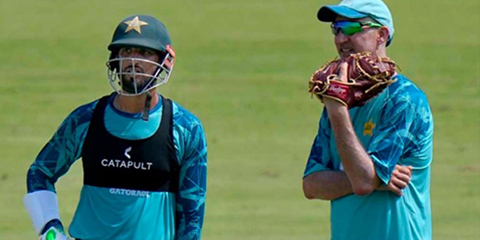
March 08, 2025: An in-depth analysis of Pakistan cricket's descent into chaos under Aaqib Javed's leadership, examining the controversial selection decisions, political interference, and systemic failures that undermined the national team ahead of the ICC Champions Trophy 2025.
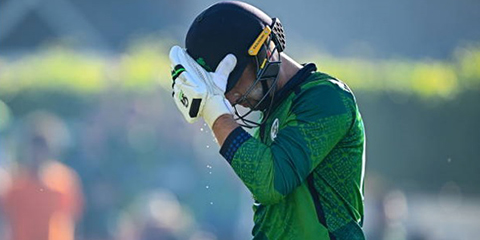
March 02, 2025: An unsparing analysis of Pakistan's Champions Trophy 2025 squad selection reveals not merely inexperience but a systemic rot of patronage networks, political expedience, and intellectual bankruptcy within Pakistan's cricket governance, continuing a tragic history of selection failures.

March 01, 2025: Pakistan cricket's selection paradox: a system where players like Babar Azam thrive despite, not because of, the process. This analysis reveals how positional shifts, political decisions, and philosophical failures continue to undermine a team capable of brilliance but hamstrung by a selection committee that mistakes chaos for strategy.
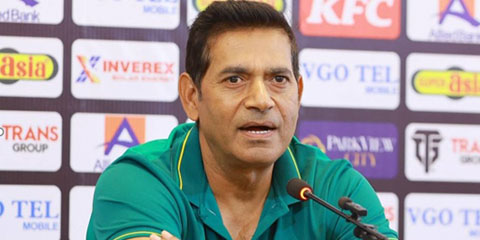
February 28, 2025: An in-depth analysis of Pakistan cricket's selection dysfunction ahead of the ICC Champions Trophy 2025, examines how the absence of a philosophical framework has led to incoherent squad choices, conflicting decisions, and a system that prioritizes survival over strategy.

February 26, 2025: Shaheen Shah Afridi’s rise was a spectacle of raw, untamed talent. But Pakistan’s cricketing establishment failed him, leading to a career plagued by injuries and mismanagement. Can he reclaim his dominance, or is his best past him? Read the full story.
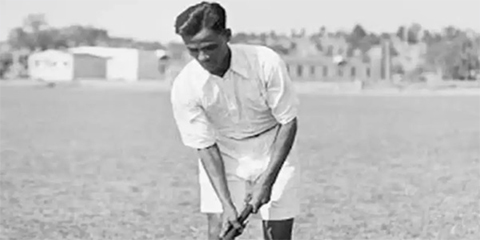
February 26, 2025: Explore the extraordinary legacy of Major Dhyan Chand, India's hockey wizard who redefined the sport, won three Olympic golds, and inspired generations with his unmatched brilliance.

February 21, 2025: Delve into the complex challenges facing Pakistan cricket as it grapples with outdated systems, political interference, and resistance to modernization. Dr. Nauman Niaz reveals how the transition from passion-driven success to bureaucratic inefficiency has left Pakistan's cricket legacy hanging in the balance.

April 11, 2025 Sindhi journalist AD Shar was brutally murdered in Khairpur, Sindh. His body was found dumped on Handiyari Link Road. PFUJ has declared a three-day mourning period and demanded justice.
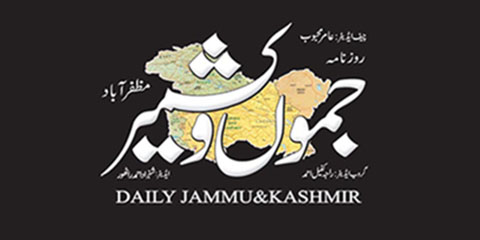
April 10, 2025 The Azad Jammu and Kashmir government has filed a case against The Daily Jammu & Kashmir and its staff for alleged fake news, drawing condemnation from PFUJ and IFJ, who demand immediate withdrawal of the FIR and an end to media repression in Pakistan.

April 08, 2025 Journalist Arzoo Kazmi alleges that Pakistan's state agencies, including the FIA, have blocked her CNIC, passport, and bank account while threatening her. She calls it a direct attack on journalism.

April 07, 2025 The Islamabad High Court has directed IG Islamabad to produce journalist Ahmad Noorani’s missing brothers, as the Ministry of Defence denies custody. SIM activity was traced in Bahawalpur, and investigations into their suspected abduction continue.

April 07, 2025 Journalist and Raftar founder Farhan Mallick has been granted bail by a Karachi court in a case concerning anti-state content aired on his YouTube channel. He still faces separate charges related to an alleged illegal call center and data theft.